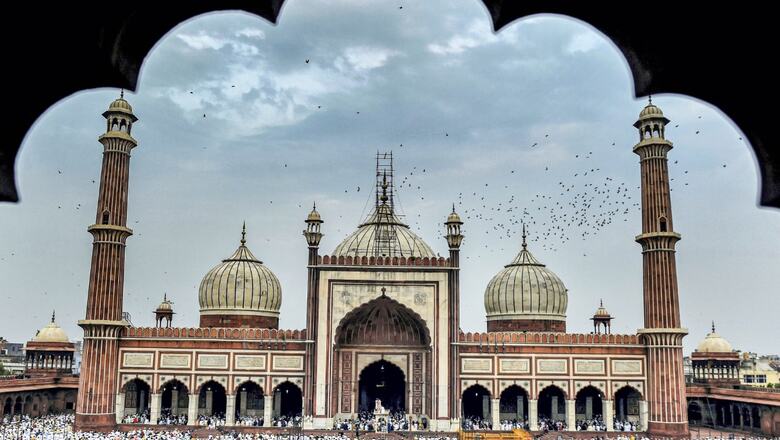
views
The towering minarets and expansive complex of Jama Masjid are etched in the mind of every Delhi resident, be it through the pages of history books or through the magnificent scenes from films like Dilli 6. The mosque, which is over 367 years old, was commissioned by Mughal emperor Shah Jahan in the historic city of Shahjahanabad, an area that is now known as Old Delhi. It was designed by none other than Ustad Ahmad Lahori, an architect who is credited with designing UNESCO World Heritage sites such as the Taj Mahal in Agra and the Red Fort in Delhi.
After its completion in 1656, Shah Jahan named the mosque “Masjid-i-Jehan-Numa”, which loosely translates to “mosque that reflects the world”. However, over the years it gained popularity as simply ‘Jama Masjid’ which means ‘Grand Mosque’.
Jama Masjid is mostly made of sandstone, but some parts, such as the outer dome, are decorated with white marble. A force of over 5,000 artisans of various origins, such as Turks, Indians, Arabs, Persians, and Europeans, toiled for 12 years to complete its construction.
One can enter the mosque through any of its three gateways that follow multiple steps till one reaches the entry gates. It is interesting to note that back in the days of the Mughal rule, each gate held a specific purpose. The eastern gate was used by the emperor and other members of the royal family, the northern gate was open for the nobles, and the southern gate was for the common people.
The mosque opens to a massive courtyard that can accommodate 25,000 people. It is also flanked by two minarets.
No visit to Jama Masjid is complete without climbing the 130 steps inside the minarets and getting a stunning panoramic view of Old Delhi. While entry to Jama Masjid is free, one has to pay a small amount to enter the minarets.
The 17th-century mosque is open every day of the week between 7:00 am to 12:00 pm and 1:30 pm to 6:30 pm. Women are advised to dress modestly. The nearest metro station to the mosque is the Jama Masjid Metro Station on the violet line of the Delhi Metro.
Jama Masjid is located in the heart of Old Delhi which places it at walking distance of historic sites like Red Fort, Shri Digamber Jain Lal Mandir, Gurudwara Sis Ganj Sahib, and the many markets of Chandini Chowk.




















Comments
0 comment